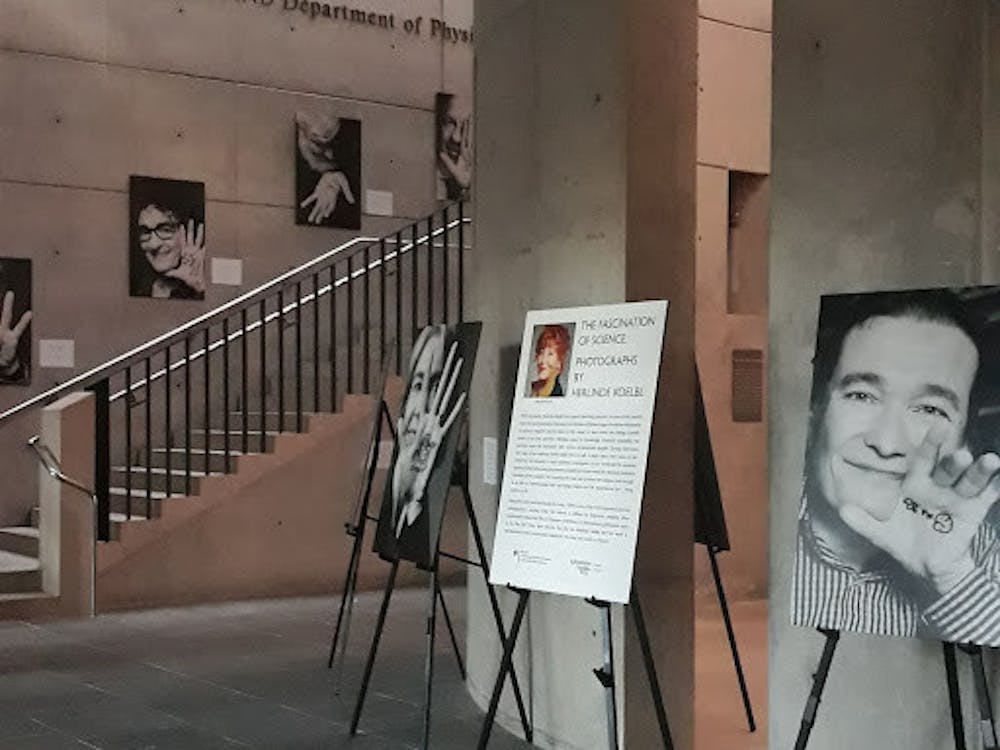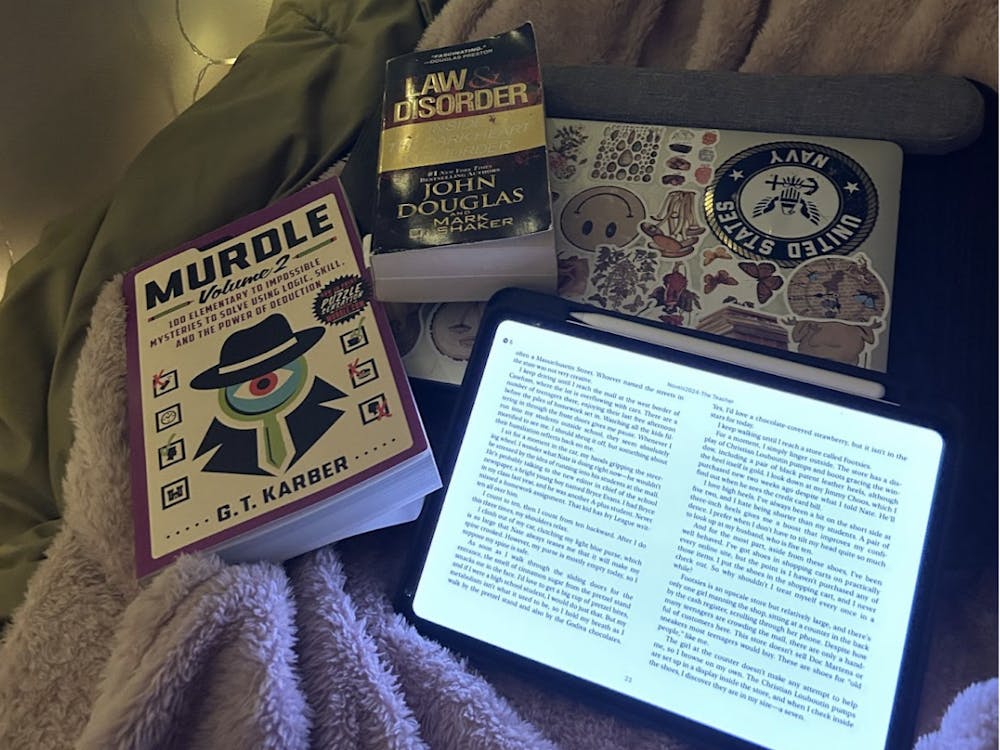The Bloomberg Center for Physics and Astronomy acquired something unexpected last month: art. The portrait exhibition The Fascination of Science features some of today’s most prominent scientists and their hands decorated with illustrations related to their work, which varies from DNA modification technology to aliens.
Created by Herlinde Koelbl, a German artist, author and filmmaker, the exhibit was sponsored by the Embassy of the Federal Republic of Germany in D.C. with contributions from the Max Kade Center for Modern German Thought and Women of Whiting. It will be available for observation until March 18 and is located in the lobby of the building.
In an interview with The News-Letter, Koelbl said she hopes her exhibit will inspire students to pursue science. The portraits are intended to contribute to Koelbl’s goal with the project — to bring science to a wider audience — by showing the personalities behind the biggest scientific discoveries in recent times.
“Normally, scientists are photographed as very serious people,” Koelbl said. “Most of them are quite old; they’re successful people. I wanted to show a new face of science.”
According to Visiting Assistant Professor of History Victoria Harms, co-moderator of a roundtable discussion on the exhibit, the artwork made its way to Hopkins at the request of the German Embassy, which believed that Hopkins would be an ideal place to display the portraits because of the University’s culture surrounding science and curiosity.
Each photo is paired with a quote from the scientist’s interview with Koelbl. In each interview, some of which can be viewed on YouTube, the scientists discuss their backgrounds and summarize their research in terms a general audience can understand. Koelbl asks them questions that aim to describe the scientist as a person and discover how each interviewee became the scientist they are today.
While the unique, casual poses in the portraits humanize the scientists, Koelbl argues that the interviews make them more relatable.
“Very often, the scientists, they live in a little closed world, like an ivory tower,” Koelbl said. “It’s a world of their own, and I thought it would be so important to make science visible to society.”
A major theme across the interviews that struck both Koelbl and Harms was the scientists’ descriptions of failure, a less-celebrated part of scientific discovery and something that affects scientists and non-scientists alike.
While conducting the interviews, Koelbl realized that scientists face failure quite often, but they accept it as a necessary part of the scientific process.
“[One of the scientists] told me, ‘If you see things as failures, then it’s really a failure. But if you see it as a new knowledge, then you will get further on,’” Koelbl said.
Harms wrote in an email to The News-Letter that the University’s mission with the exhibit is to highlight the need for and benefits of diversity in the scientific community. She emphasized this principle in an interview with The News-Letter.
“Questions about urban public health and so forth that have really become so important during the pandemic — we've not answered some of these most pressing questions, actually,” Harms said. “Much of it has to do with the fact that we don’t have enough diversity among our scientists.”
Koelbl also briefly discussed diversity in science, which she hopes her artwork will help promote. Her artwork displays current scientists’ motivation for entering the field, which she believes has the potential to inspire students of all backgrounds to pursue science.
“When, for instance, Frances Arnold — she’s one of the Nobel laureates — or some others when they were in science, it was really tough for them as women to make their way up to the top,” she said. “So I wanted to show what inspired them to choose science.”
With her project, Koelbl wants to introduce a new way of thinking about science, a way that involves empathy and artistry. She feels her exhibit demonstrates that viewing science through art highlights the scientists over the science, the personalities over the discoveries.
“You could see it on [the scientists’] faces how lively they were suddenly,” Koelbl said. “So the scientists are now shown in a different way, a more sympathetic and lively way. It’s a new idea, to have their philosophy or formula on their hand; that’s really unusual.”





